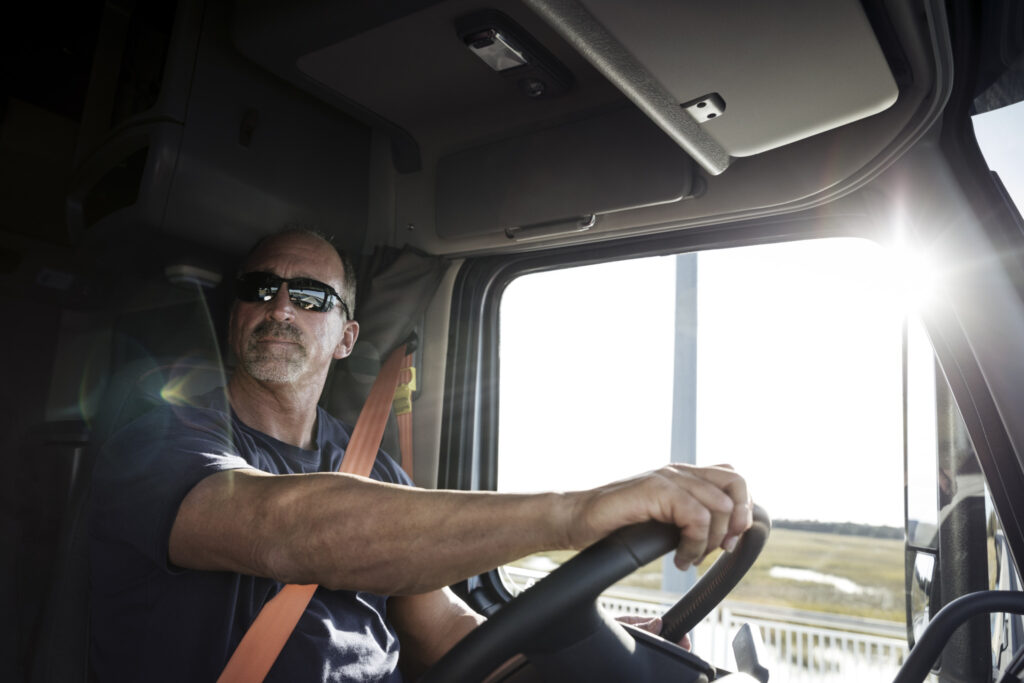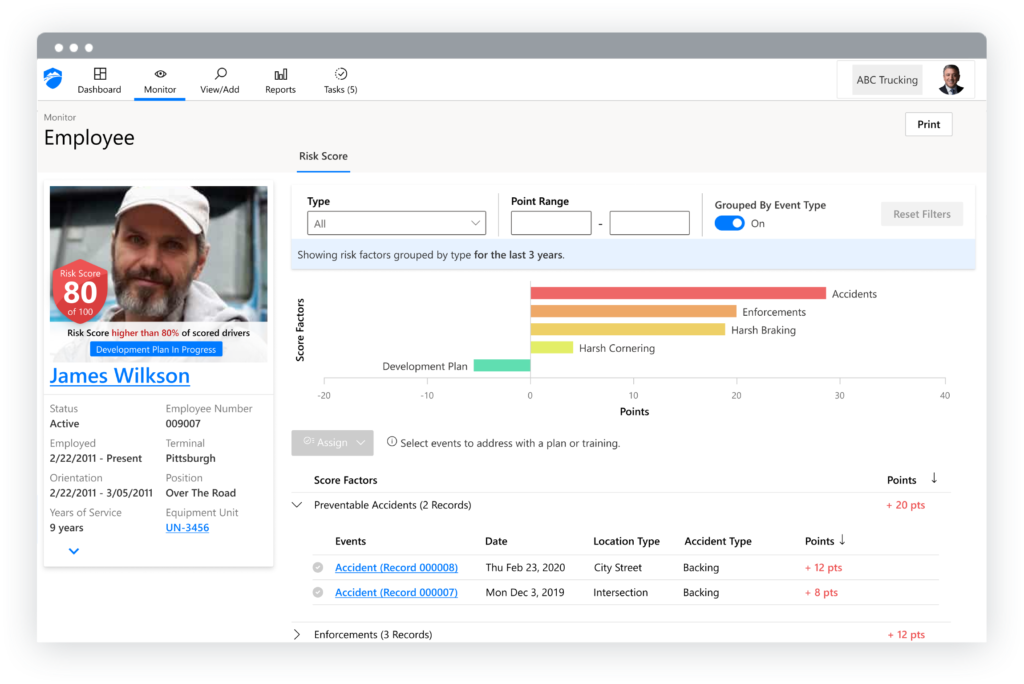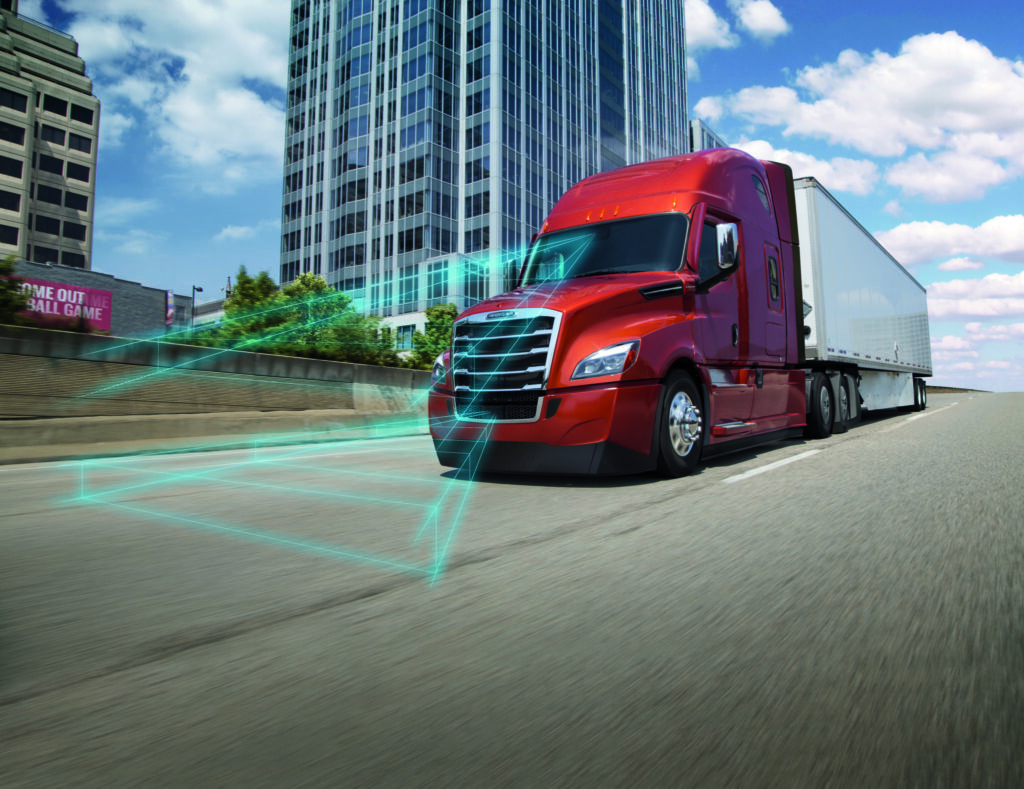How technology has evolved the safety manager’s role
Safety systems such as lane departure and following distance warnings seem friendly and helpful when you are a new driver, but can get annoying after a while, says an experienced trucker who works for a national fleet.
“After a year of driving, that same gadget becomes a nuisance,” says Rocco S., who requested his real name not be used. “Once you gain experience, the continuous beeping becomes irritating.”
This creates a challenge for fleets: how to continue to reap the safety benefits brought by safety technologies that beep, shake, and record drivers, without them leaving in frustration or looking for ways to circumvent the technologies.

These days there are plenty of potential eyes watching the person holding the steering wheel, with telematics, radar sensors, and cameras becoming increasingly popular spec’s. Advanced driver assistance systems (ADAS) with automatic braking significantly reduce the risk of front-end collisions, safety advocates report.
But the potential benefits still need to be promoted.
Some drivers are initially opposed to using ADAS technologies like adaptive cruise control, lane departure warning and driver-facing cameras, says Ashley Murickan, product marketing manager, Volvo Trucks North America.
A lane departure warning is usually an audible alert that is triggered when the vehicle veers outside a designated lane or onto the shoulder of a roadway. Adaptive cruise control automatically adjusts the vehicle speed to maintain a safe distance from vehicles ahead. The system may use a radar, laser or camera – or combination thereof – that forces the truck to brake when it detects it approaching a vehicle ahead and accelerates when traffic allows.
Murickan says once drivers hear their peers discuss how these systems saved them from an accident, make their jobs easier and safer in general, or proved that the driver was not at fault during an incident, they understand the true value the technology brings.
“Learn how to manage your technologies. You can get in the truck and drive it, or get in the truck and manage it.”
Clark Lee, Nussbaum Transportation driver
These systems are capable of monitoring driver behavior, in addition to providing training techniques. They also help fleets improve safety scores by promoting and adopting good driving habits – as well as helping drivers protect their jobs, the Volvo manager says.
Clark Lee, a driver for Illinois-headquartered Nussbaum Transportation, says regarding features like adaptive cruise and lane-keep assist, “The biggest thing I tell people is to learn how to manage your technologies. You can get in the truck and drive it, or get in the truck and manage it. You can complain about it or learn to use it to your advantage and save fuel, keep yourself safer, keep the environment cleaner, and learn how to manage that truck. Don’t just drive it – manage it.”
“Safety systems reduce accident costs and downtime – resulting in a better safety record, make drivers’ jobs easier, as well as help prevent driver fatigue, reduce driver turnover and training costs,” says Ryan Major, on-highway market segment manager, Daimler Trucks North America.

Idelic’s Driver Watch List even adds a layer of artificial intelligence to analyze the data generated by such systems, predicting which drivers are at risk of a crash and why, says Matt Stalford, digital communications specialist.
“The information can help fleets assign targeted training to their at-risk drivers and focus on the root causes of each driver’s risk,” he says.
The company’s safety suite offers fleets a new, more streamlined way of managing their entire safety operation. “Our customers have used the time-savings and tools our platform offers to improve retention by as much as 43%, which directly correlates to fewer crashes,” Stalford says.
DTNA’s Major says, “Our fleet customers have told us that they appreciate both active and passive safety systems. Fleets are also thinking about these systems and features as recruitment tools as they contribute to not only driver safety and the safety of other drivers on the road, but help reduce driver fatigue and provide a more comfortable operating experience. Drivers adapt quickly to them and they make a more enjoyable and safer workday for them.”

Longhaul driver Rocco S. feels inward facing cameras are a direct intrusion of privacy, though. “I have a dash cam facing outward, that I purchased, to record incidents on the road. For example, if someone hits me, I have proof it’s their fault, not mine.” He says he does not have any other monitoring devices in his truck because he is an owner-operator.
Forward-facing dash cameras have proven to be effective for accidents, hit-and-runs and compliance issues, says Clarisse Dagenais, claims and asset manger at Wellington Motor Freight. Trucks on the dedicated fleet that run highway in Canada and the U.S. are equipped with forward-facing dash cameras. “At this time, we are not installing driver-facing cameras,” she says.
But the forward-facing cameras provide evidence during investigations, both internally and with authorities, and drivers feel safer and protected with them, she adds.
The “panic button” feature on dash cams is a great tool for drivers, and has assisted with near-miss incidents, which allows for further training if needed, Dagenais says.
Drivers press the button that is installed on the camera, for example, if they are in a near-miss situation where there is no hard braking. This triggers an alert and Dagenais can review the footage and use it for educational and training purposes.
At Erb Group, accident costs have been reduced 40-50% over the first three years of full implementation of forward- and rear-facing cameras, says Tom Boehler, Erb’s safety manager.
“This has been by far the largest return on investment for correcting high-risk behavior.”
Tom Boehler, Erb Group safety manager
“This has been by far the largest return on investment for correcting high-risk behavior, reducing claims, and helping exonerate drivers as well as the company from false claims,” he says.
Some vehicles in the Erb fleet are equipped with features including collision mitigation and anti-rollover systems (for long combination vehicles). The collision mitigation system even helps to teach drivers safe following distances, Boehler says.
“Saving lives is at the heart of everything that we do. Our vision is that no commercial driver is ever the cause of a collision,” says Kristin Costas, director, product management with camera supplier Lytx.
The telematics company’s driver safety suite uses video, along with optional real-time alerts, to help fleet managers and drivers become aware of and correct risky driving behaviors.
“Our solutions help fleets address risk early, change risky driving habits, which in turn help prevent major collisions,” Costas says.
“Technology can help detect distracted driving inside and outside the vehicle, and alert drivers to behaviors associated with collisions, including cell phone use, seat belt use, inattentiveness, eating and drinking, smoking, failure to stop at intersections, weaving within or departing from lanes, and unsafe following distances,” Costas says.
“You’ll also have access to detailed reports that can track the duration of persistent behaviors and the percentage of drive time those behaviors consume. This can help you see how much time these habits are taking up your driver’s day.”
Artificial intelligence
Idelic’s Stalford says, “[Artificial intelligence] will help fleets extend their reach and command the space they occupy. Safety managers will be better able to identify risk and use their person-to-person communication skills to train drivers on the risks their AI technology has identified.”
Fleets should not think of AI as “replacing” what their safety managers do, but rather “enhancing” it, he adds.
Boehler says Erb strives to make the dash camera program a tool for coaching and driver improvement, rather than for punishment. The safety system reminds drivers of high-risk events on a continuous basis.
“If you do not monitor this, you let bad habits sneak in and are cultivated,” Boehler says.
The idea of these systems is to change your driving habits, driver Rocco S. opines. “There will be more gadgets until trucks get fully automated.”
Have your say
This is a moderated forum. Comments will no longer be published unless they are accompanied by a first and last name and a verifiable email address. (Today's Trucking will not publish or share the email address.) Profane language and content deemed to be libelous, racist, or threatening in nature will not be published under any circumstances.
It is a challenge for sure selling the cameras to our drivers but i think the key is showing cases that result in the drivers being proven innocent with the use of camera footage. Too many times insurance companies fold due to lack of evidence like video footage, to avoid court or legal fees.